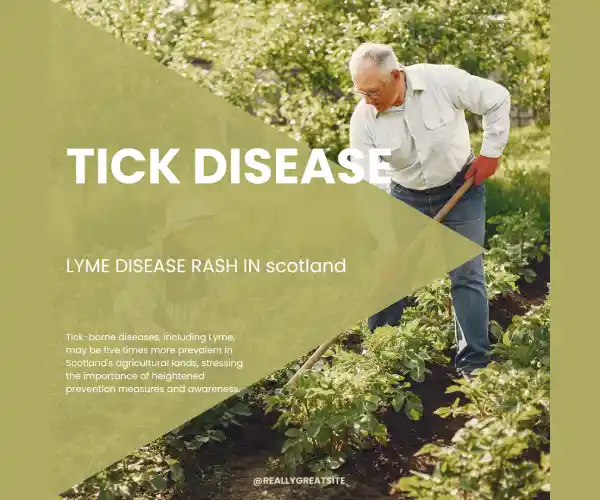Lyme disease rash or tick disease increases in Scotland.
Overview
In Scotland, cases of tick-borne diseases, especially Lyme disease rash, have surged, potentially reaching five times higher than previously thought. Lyme disease rash, caused by a bacterial infection transmitted through tick bites, manifests in flu-like symptoms and a distinct round rash.
While curable with antibiotics, it can lead to long-term debilitating effects. The research, conducted by the Scottish Lyme Disease Rash and Tick-borne Infections Reference Laboratory in Inverness, highlights the need for heightened awareness, prevention, and swift management strategies.
Causes
The primary cause of Lyme disease in Scotland is the bite of infected ticks, prevalent especially in the Highlands. Ticks latch onto humans during outdoor activities in grassy or wooded areas. Failure to detect and remove ticks promptly increases the risk of infection. Moreover, misdiagnosis or underreporting of cases contributes to the discrepancy in official figures.
Where and How to Manage or Take Precautions:

- Awareness and Education: Public awareness campaigns should emphasize the risk of tick bites and the symptoms of Lyme disease. Educational materials can inform individuals about high-risk areas and proper tick removal techniques.
- Preventive Measures: When venturing into tick-prone areas, wear long sleeves, pants, and insect repellent containing DEET. After outdoor activities, thoroughly check the body for ticks, paying close attention to warm and moist areas.
- Prompt Removal: If a tick is found, use fine-tipped tweezers to grasp it as close to the skin’s surface as possible and pull upward with steady, even pressure. Clean the bite area with antiseptic and monitor for signs of infection.
- Seek Medical Attention: If symptoms of Lyme disease appear, such as fever, fatigue, or the characteristic rash, consult a healthcare professional promptly. Early diagnosis and treatment with antibiotics are crucial to prevent long-term complications.
- Research and Surveillance: Continued research and surveillance efforts are essential to accurately assess the prevalence of Lyme disease and improve diagnostic and treatment protocols.
By implementing these measures, individuals and healthcare systems can effectively manage and mitigate the impact of tick-borne diseases like Lyme disease in Scotland.
Bottom line
Stay vigilant against tick bites. Early detection and prompt removal are crucial in preventing Lyme disease. Protect yourself and your loved ones with proper prevention measures in tick-prone areas.







